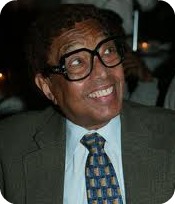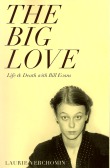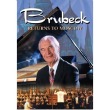Doug Ramsey's Blog, page 6
December 30, 2010
Other Places: Preservation Haul
Oregon Music News has a line on its masthead listing the categories the online publication covers:
CLASSICAL, JAZZ/BLUES, ROCK/ROOTS, ACOUSTIC, INDIE, DJ/ELECTRO, SOUL/HIP-HOP, MELTING POT, FAMILY, MUSICALS
I don't spend much time with two-thirds of those genres and although I found it enlightening to rummage through the OMN sections about them, I doubt that I will be delving deeply into, say, DJ/Electro. I'm glad it's there for those who need it. The current lead story in the jazz section is Jack Berry's "Saga of the not-so-lost Oregon Jazz treasure trove (part 2)." Berry updates questions about the fate of a cache of reel-to-reel audio tapes and videos recorded over the years by the late sound man Bob Thompson.
Among the musicians Thompson captured were Art Pepper, Jim Pepper, David Friesen, Dave Frishberg, Floyd Standifer, Nancy King and a few dozen other musicians better known in the Pacific Northwest than they are nationally. The recordings now belong to the Jazz Institute of Los Angeles, where they are stored with no apparent plan for their permanent preservation or eventual release. If there is other music of the quality of a clip of the late tenor saxophonist Jim Pepper, bassist David Friesen and drummer Ron Steen in a basement session, let's hope that the institute has something in mind. To read Berry's story and hear Friesen, Pepper and Steen play "My One and Only Love" (mistitled "Bolivar Blues"), click here.
permanent preservation or eventual release. If there is other music of the quality of a clip of the late tenor saxophonist Jim Pepper, bassist David Friesen and drummer Ron Steen in a basement session, let's hope that the institute has something in mind. To read Berry's story and hear Friesen, Pepper and Steen play "My One and Only Love" (mistitled "Bolivar Blues"), click here.
December 29, 2010
Billy Taylor, 1921-2010
Billy Taylor, a pianist who became a television and radio spokesman for jazz and made the music familiar to millions, died last night in a New York City hospital after suffering  heart failure at home. He was 89. In his work on National Public Radio and CBS-TV's Sunday Morning, Taylor's playing and relaxed explanations dispelled for many listeners and viewers the notion that jazz was remote, impenetrable and difficult. He earned a doctorate in music in 1975 and chose to be called Dr. Taylor, a title that suited his professorial side. For a summary of his career and accomplishments, see the obituary by Peter Keepnews in The New York Times.
heart failure at home. He was 89. In his work on National Public Radio and CBS-TV's Sunday Morning, Taylor's playing and relaxed explanations dispelled for many listeners and viewers the notion that jazz was remote, impenetrable and difficult. He earned a doctorate in music in 1975 and chose to be called Dr. Taylor, a title that suited his professorial side. For a summary of his career and accomplishments, see the obituary by Peter Keepnews in The New York Times.
Taylor was born into a middle class Virginia family and grew up in Washington, D.C. When he arrived in New York in 1943, he was educated, articulate and eager to build on his solid foundation in music. I spoke at length with him as I prepared the notes for the reissue of several of his early 1950s recordings in Billy Taylor Trio. An excerpt gives an idea of the intellectual curiosity he brought to his early music-making and of the difference he made in the development of jazz piano.
The young pianist went to work for tenor saxophonist Ben Webster at the Three Deuces. Unlike most horn soloists, Webser encouraged Taylor's use of rich chords in accompaniment. Taylor was inspired harmonically by Duke Ellington's piano introduction to "In a Mellotone," which he heard when he was a student.
"That wiped me out," Billy says. "I said, 'What's he doing?' So I figured it out. It was an A-flat ninth in the left hand and an octave with a fifthA-flat, E-flat, and A-flatin the right hand. I liked it and began fooling around with it, added a couple of things to it; one voicing in one hand and another voicing in the other. By the time I came to New York, that was a part of my approach. Most horn players said, 'That's in my way' because they were used to being accompanied around middle C, in the lower part of the piano. I was an octave higher. Ben was a former pianist. He liked it and encouraged me to do it."Over the next decade, Taylor refined his chord-plus-octave style. By the time he had realized his ambition to form a permanent trio and went into the Prestige studio in late 1952, the sophisticated technique was in his musical grain. By then, a Taylor harmonic invention might be built like this: B-flat, C-ninth, E, and G or G-13th in the left hand, C, E, G and C in the right hand.
"I was harmonically oriented," he says, a masterpiece of understatement. "In those days a lot of these harmonies were not common. I was very proud that I was able to establish them."
When the recordings at hand were released as 78-RPM singles, Taylor's harmonies reached the ears of many pianists, who adapted them to their own playing. Later in the fifties the sound was to be identified with Red Garland, a pianist who rose to fame as a member of the Miles Davis Quintet. But Taylor pioneered the approach.
There are dozens of Billy Taylor videos on YouTube, part of his legacy of media visibility. In this one, he plays a decidedly two-handed blues. The interested onlooker is fellow pianist John Lewis.
No remembrance of Taylor would be complete without his most famous composition, "I Wish I Knew How it Would Feel to be Free," the piece that became an anthem of the civil rights movement. Here, he plays it with bassist Victor Gaskin and drummer Curtis Boyd.
Finally, a memory from April of 1969, a rehearsal of the all-star band that performed for Duke Ellington's 70th birthday celebration at the White House. It recalls Taylor's magnanimity and the respect other musicians had for him. The pianists on hand included Taylor and Dave Brubeck, both of whom would be featured that night. A photographer approached them and said, "Can I get one of you together?"
"Sure," Billy told him. "Maybe something will rub off."
"I hope so," Brubeck said"On me."
December 27, 2010
Other Matters: Ciccolini Plays Satie
Many Rifftides readers may be familiar with Erik Satie's "Gymnopédie No. 1" because performers including Jessica Williams, Jacques Loussier, Ximo Tébar and Herbie Mann with Bill Evans have recorded jazz or near-jazz versions of that classic of French music. It has not become a jazz standard, but it has assumed a modest place in the repertoire. For those who have not heard the piece as Satie wrote it in 1888, here it is, played by the eminent Satie interpreter Aldo Ciccolini. The performance is from a 1979 Canadian broadcast.
At 85, Ciccolini continues to perform Satie, Debussy, Ravel, Janáček and Schumann, among others. This collection contains most, if not all, of his recordings of Satie's music.
December 24, 2010
Joyeux Noel, Frohe Weihnachten, Feliz Navidad, Christmas Alegre, Lystig Jul, メリークリスマス, Natale Allegro, 圣诞快乐, Καλά Χριστούγεννα, 즐거운 성탄, И к всему доброй ночи And С Новым Годом

The Rifftides staff wishes you a Merry Christmas, a splendid holiday season and happy listening.
For good measure, here is a scene captured yesterday on the staff winter field trip.
[image error]
December 23, 2010
A Sad Note: Jack Tracy Is Gone
Jack Tracy died on Tuesday, December 21. He was 84. Jack was editor of DownBeat magazine in the 1950s and went on to a second career producing fine jazz recordings. He was a frequent Rifftides commenter. We shall miss his knowledge, pointed observations, humor and friendship.
December 22, 2010
New Picks, Delayed But Worth The Wait
 A flurry of deadlines for other projects meant that it took a while to get the new batch of recommendations ready, but they are posted. In the center column under the legend Doug's Picks you will find suggestions of CDs by pianists and saxophonists, a DVD documentary about a momentous event in Moscow and a book about the last days and last love of Bill Evans.
A flurry of deadlines for other projects meant that it took a while to get the new batch of recommendations ready, but they are posted. In the center column under the legend Doug's Picks you will find suggestions of CDs by pianists and saxophonists, a DVD documentary about a momentous event in Moscow and a book about the last days and last love of Bill Evans.
December 21, 2010
Book: Laurie Verchomin On Bill Evans
 Laurie Verchomin, The Big Love: Life & Death With Bill Evans (Verchomin). The "Laurie" of the pianist's song by that name spares nothing in her account of their romance or of the drug use that hastened Evans' death at 51. Love between the pianist and the young woman flared in the year-and-a-half before Evans died in late 1980. Her book is the story of the life-affirming brilliance of his music in the final months, a man resigned to the inevitability of his early mortality and the devotion of the young woman he chose to share the end of his life. The drug ugliness is at odds with the beauty of Evans' music, but Ms. Verchomin illuminates his generosity, consideration and humor.
Laurie Verchomin, The Big Love: Life & Death With Bill Evans (Verchomin). The "Laurie" of the pianist's song by that name spares nothing in her account of their romance or of the drug use that hastened Evans' death at 51. Love between the pianist and the young woman flared in the year-and-a-half before Evans died in late 1980. Her book is the story of the life-affirming brilliance of his music in the final months, a man resigned to the inevitability of his early mortality and the devotion of the young woman he chose to share the end of his life. The drug ugliness is at odds with the beauty of Evans' music, but Ms. Verchomin illuminates his generosity, consideration and humor.
DVD: Dave Brubeck
 Dave Brubeck, Brubeck Returns to Moscow (Koch Vision). This 2005 film about Brubeck's 1997 visit to Russia for a performance of his mass To Hope is a beautifully crafted documentary. It incorporates Brubeck's quartet with a symphony orchestra and chorus performing the mass and a rousing "Blue Rondo ala Turk." We see Brubeck's informal encounters with the Russians, including a spirited impromptu duet with a young violinist, and conductor Russell Gloyd amusingly overcoming the language difference to rehearse the dozens of musicians. There is also footage of Brubeck on a previous Moscow occasion, at the Reagan-Gorbachev summit of 1988, before the wall came down.
Dave Brubeck, Brubeck Returns to Moscow (Koch Vision). This 2005 film about Brubeck's 1997 visit to Russia for a performance of his mass To Hope is a beautifully crafted documentary. It incorporates Brubeck's quartet with a symphony orchestra and chorus performing the mass and a rousing "Blue Rondo ala Turk." We see Brubeck's informal encounters with the Russians, including a spirited impromptu duet with a young violinist, and conductor Russell Gloyd amusingly overcoming the language difference to rehearse the dozens of musicians. There is also footage of Brubeck on a previous Moscow occasion, at the Reagan-Gorbachev summit of 1988, before the wall came down.
CD: Harold Danko, Dick Oatts, Rich Perry
[image error]Harold Danko, Oatts & Perry II (SteepleChase). Pianist Danko was a colleague of alto saxophonist Dick Oatts and tenor saxophonist Rich Perry in the Thad Jones-Mel Lewis band and never got over themwith good reason. This successor album to Oats & Perry (2006) again teams the three with bassist Michael Formanek and drummer Jeff Hirshfield. It reemphasizes the reasons that Oatts and Perry are admired among musicians and serious listeners for their inventiveness, passion and tonal qualities. In addition, it has plenty of Danko's incisive soloing. They glorify tunes by Danko, Jones, Wayne Shorter, Horace Silver, Richard Rodgers, Johnny Mercer and Miles Davis, whose "Sid's Ahead" is a moody highlight.
CD: Rudresh Mahanthappa & Bunky Green
[image error]Rudresh Mahanthappa & Bunky Green, Apex (Pi). Mahanthappa, aged 40, is one of the most visible alto saxophonists of the 21st century; Green, aged 75 one of the least. As a result of this album, Green is gaining the prominence he might have achieved in the 1960s had he not left Charles Mingus for academia. Among the saxophonists he influenced through recordings was Mahanthappa. Together, they are formidable kindred spirits. Throughout, but notably on "Summit" and "Playing with Stones," their singleness of purpose, interplay and energy are remarkable. Pianist Jason Moran, bassist Francis Moutin, and drummers Jack DeJohnette (four tracks) and Damion Reid (six tracks) abet this inspired pairing.
Doug Ramsey's Blog
- Doug Ramsey's profile
- 2 followers



